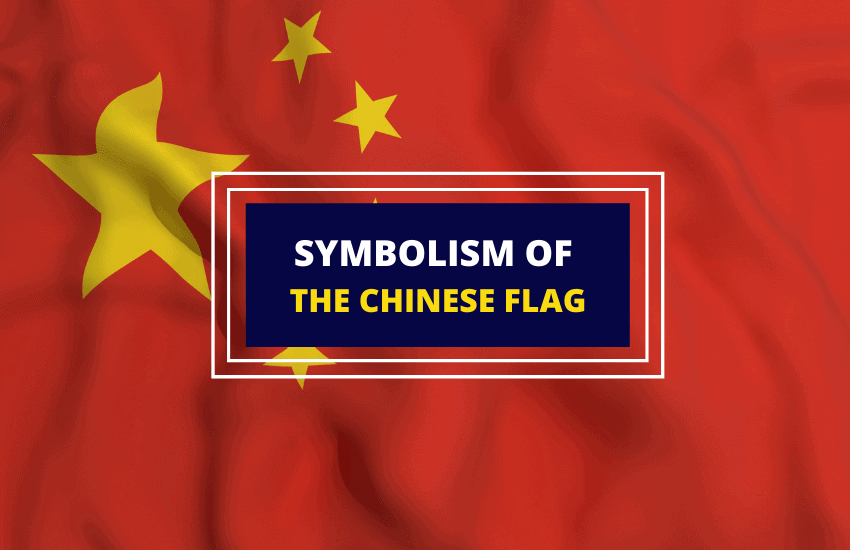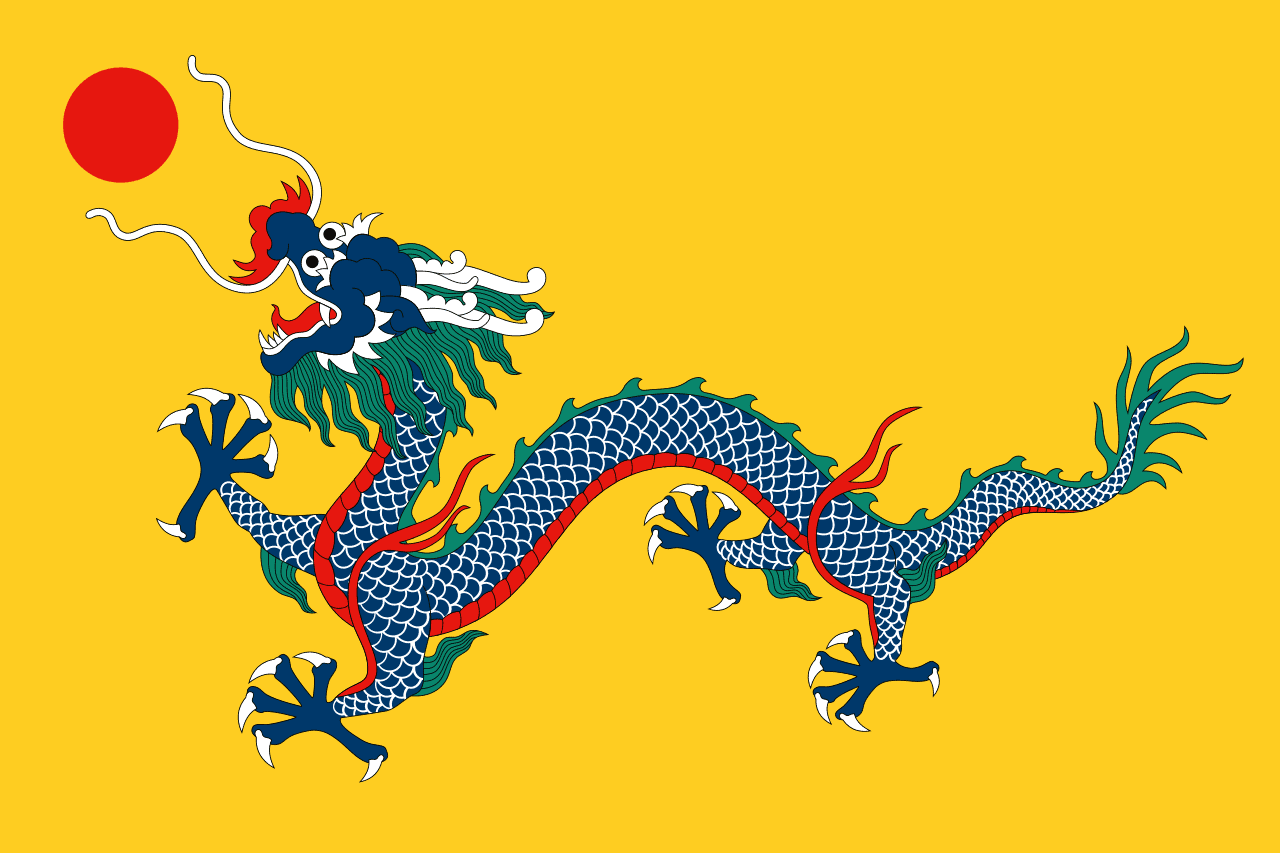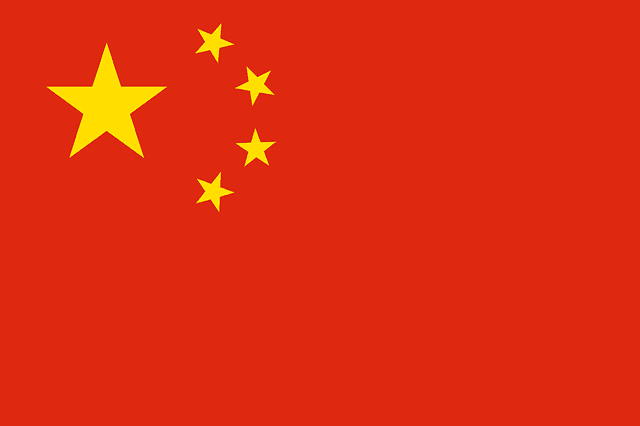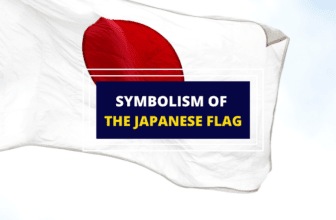
Table of Contents
The day before the People’s Republic of China was founded, the Communist Party held a design contest for a flag that would symbolize its new government. They published a notice in some newspapers to ask its people for some ideas.
Designs came flooding in, with each artist coming up with a unique interpretation of the government’s main requirements – it needed to be red, rectangular, and a great representation of China’s culture and the power of the working class.
Read on to learn more about how the winning design in this contest eventually became the eye-catching Chinese flag that the world came to know.
China’s First National Flag

In the late 19th Century, the Qing dynasty adopted the first national flag of China. It had a yellow background, a blue dragon, and a red flaming pearl at the top of its head. Its design was inspired by the Plain Yellow Banner, one of the official flags used by armies that were reporting directly to the Chinese emperor.
Popularly known as the Yellow Dragon Flag, its background color symbolized the royal color of Chinese emperors. During this period, only the members of China’s imperial family were allowed to wear the color yellow. Similarly, the five-clawed blue dragon in its center represented imperial power and strength. In fact, only emperors were allowed to use this emblem. The red flaming pearl not only complements the yellow background and the blue dragon – it also symbolizes prosperity, good luck, and wealth.
In 1912, the Qing dynasty was overthrown and Pu Yi, China’s last emperor, lost his throne. Sun Yat-sen led the new Republic and introduced a flag with five horizontal stripes colored yellow, blue, black, white, and red. Aptly known as the Five-Colored Flag, it was believed to represent the five races of the Chinese people – the Han, the Manchus, the Mongols, the Hui, and the Tibetans.
The Winning Design
In the summer of 1949, the flag that outlived all China’s flags came to fruition. A Chinese citizen named Zeng Liansong won a design competition that the Communist Party initiated. It is said that he was inspired by the proverb longing for the stars, longing for the moon. He decided that stars should be the main feature of the Chinese flag.

To represent the Communist Party, he added a big yellow star in the flag’s upper left corner. The four smaller stars to the right represented the four revolutionary classesthat Mao Zedong mentioned in his speech – shi, nong, gong, shang. These referred to the working class, the peasantry, the petty bourgeoisie, and the national bourgeoisie.
The original version of Zeng’s design also had a hammer and sickle at the center of the biggest star. However, this was dropped in the final design because the committee felt like this would make their flag extremely similar to that of the Soviet Union.
Surprised to learn that the Communist Party chose his design, Zeng received 5 million RMB. This is roughly equivalent to $750,000.
The Five-star Red Flag, China’s national flag, debuted on October 1, 1949. It was first hoisted in Tiananmen Square in Beijing. The founding of the People’s Republic of China was formally announced on this historic day as well.
The Elements in China’s Flag
Every detail of China’s flag was recorded in a plenary session held by the Chinese People’s Political Consultative Conference (CPCC). The following main elements have been meticulously recorded:
- The flag’s top-left part measures 15 by 10 units.
- The outline of the biggest star begins at five units from its hoist. Its diameter measures 6 units.
- The first small star is located 10 units from the hoist and 2 units from the top of the flag. The next one is 12 units away from the hoist and 4 units from the top of the flag.
- The fourth star is displayed 10 units away from the hoist and 9 units from the top of the flag.
- Each star has a diameter of 2 units. All the small stars point to the biggest star’s central part.
Each element in China’s official flag has a distinct meaning. In terms of its color, the Chinese flag’s red base meant two things. First, it represents the communist revolution. Second, it symbolizes the blood of the martyrs who gave up their lives for China’s liberation.
The golden yellow color of its stars has an important role in China’s history. Just like the yellow color in the flag of the Qing dynasty, it symbolizes the power of the imperial family. It is said to represent the Manchu dynasty as well.
The four stars in the flag don’t only represent China’s social classes. Others believe that they also signify the four elements: water, earth, fire, metal, and wood, which were all associated with China’s past emperors.
The Controversial Runner-up
Among all the submissions, Zeng Liansong’s version of the Chinese flag was not Mao Zedong’s favorite. His first choice featured the familiar red background, a single yellow star in its upper left corner, and a thick yellow line below the star. While the yellow line was supposed to represent the Yellow River, the big star was meant to symbolize the Communist Party of China.
Although Mao Zedong loved this design, other members of the party did not like it as much. They felt like the yellow line in the flag somehow suggested disunity – something that a new nation absolutely couldn’t afford.
Understanding Chinese Communism
To understand why the Communist Party and the revolutionary classes came to be the main attraction in China’s flag, you have to learn more about Chinese communism. Contrary to what Marx and Engels predicted, the revolution didn’t begin in industrial countries like France, England, and Germany. It started in less economically advanced countries like Russia and China.
In Mao Zedong’s work, he also believed that China would be liberated from feudalism and imperialism not by the proletariat but by the union of the four revolutionary classes symbolized in the Chinese flag. Aside from the peasantry and the proletariat, the petit bourgeoisie and the national capitalists were also anti-feudal and anti-imperialist. This meant that even though these classes are both reactionary by nature, they played an important role in building a socialist China.
Mao Zedong believed that all four classes would eventually unite to defeat the feudalists, bureaucrat capitalists, and imperialists, which are the supposed oppressive groups that aim to use China’s resources for their personal interests. True enough, these four distinct groups became major players in liberating China from its said oppressors.
Wrapping Up
China’s flag may look simple, but the amount of thought and care that was put into designing it is indeed commendable. Aside from being a key part of China’s nation-building, its flag also bore witness to all the monumental events that made China what it is now. Just like other countries, China’s flag will continue to be a symbol of its rich history and culture and its people’s fierce patriotism.








